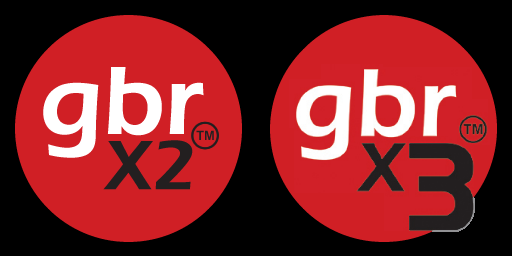
The status view consists of two panes. On the left, the status of all open work orders is displayed. On the right, there are short lists of activities which need attention.
Work order status
This list displays an overview of active work orders and their progress through the various steps (mileposts) from order to shipment. Click the Refresh button to load the list. Click on a product number in the list to view product details.
Filtering
If a search text is entered, work orders which do not contain the text in any of the following columns are hidden when the Find button is clicked: Product, WO#, Seller, or Supplier. This is also true when clicking Refresh or when selecting product types. Click the Clear button to delete the text and show all work orders.
It is also possible to view only certain product types, by setting check marks in the Product types drop-down list.
Mileposts
Typically, there are four mileposts which apply to the supplier:
- Receive Download manufacturing data and confirm data received by supplier
- Manuf Confirm product manufactured. There may also be additional progress mileposts prior to Manuf.
- QA Examine and confirm that product is in conformance with specifications
- Pack/Ship Package products and then mark as shipped from supplier
For some suppliers and product types, additional mileposts may exist. As these are completed (signed), the customer can follow the progress of their order.
Mileposts which do not apply to the product are marked with a horizontal line.
A yellow cell indicates a milepost that is waiting for completion by the user's organization. A green cell indicates a completed milepost.
Each milepost should be signed as it is completed. This is done by clicking on the milepost cell in the view, and clicking on the Sign button in the dialog box which appears. It is also possible to add messages to a milepost.
Clicking on a QA milepost cell opens the Product Quality Control Module. Before signing the QA milepost, each item must be examined and approved; using a product-specific checklist.
Clicking on a Pack/Ship milepost cell opens the Packing and Shipping Module. Before signing the Pack/Ship milepost, the items must be “packaged,” which assigns package numbers and prints packing labels, address labels, and packing lists for the products. The carrier's tracking number (which must be obtained from an external system) should also be entered in this module.
Messages
A message from operator may be attached to a supplier milepost. It is also possible to add a message to operator to other mileposts. Bold text indicates that there is a message attached to the milepost. Right-click on the row and choose Milepost messages to display all milepost messages.
History
Right-click on a work order and choose Progress history for this WO to display the milepost history (including timestamps and operator names) for the work order.
Packing and shipping
The QA and Pack/Ship mileposts are used to examine the products and prepare documents prior to shipment. These mileposts are closely tied to the order and shipment database, so it is very important that the quantities specified in these steps are correct.
Proper sequence of events for QA and Pack/Ship mileposts:
- Open the Product Quality Control Module. For each product, check that each item meets the criteria listed in the checklist, specify the quantity to approve and then click on the Approve button. Once all ordered items have been approved, sign the milepost.
Open the Packing and Shipping Module. Click on the Pack button. This will generate labels and packing lists for all of the approved boards. Be sure to specify correct quantities for each vacuum package. Each label has a unique tracking number, so it is important to put the correct label with the correct quantity on each vacuum package, and not use duplicate labels or change the quantity with a pen.
The Pack to Seller button packs all approved items for shipment to the seller. This button is intended for quickly packing the remainder of the work order after any items which are to be shipped directly to the end user have been packed. With this operation, only one packing list will be generated. None of the (unpacked) items will be packed for direct shipment to the end user.
- Click on the Ship button. This opens the Shipment Details module, which shows each packing list and its vacuum packages. The packing list should be packaged together with the labeled vacuum packages for shipment to the correct address. If necessary, a label or packing list may be re-printed by right-clicking on the vacuum package or packing list. It is also possible to export a shipment to UPS WorldShip.
- Double-click on each packing list number to enter the carrier's (UPS, DHL, etc) tracking number (or waybill number) for the shipment. Once the tracking number has been entered, the boards will be listed as Shipped in the Packing and Shipping Module as well as in the sellers order database. Once all boards have been shipped, sign the milepost.
Quality documentation
Quality documentation, such as certificate of conformity, test data, pictures, etc. which follows a work order should be uploaded so that the documentation will be available to system users. The documents should be packaged in a zip file prior to upload. In the Work orders status view, right-click on a work order and choose Upload quality documentation. Browse to the zip file and choose OK to upload.
Activities which need attention
Suppliers should respond to three kinds of events in a timely manner: incoming RFQs, incoming Work Orders, and shipped products which lack QA documentation. These are listed in the right pane of the Status view. Click the Refresh button to load the lists.
There is an Auto-refresh check box for each list. When checked, the list will automatically update every few minutes. The refresh interval is shown at the top of the right pane, and may be modified by clicking the Change button.
RFQs to answer
When an RFQ is generated, it will appear in this list until a quotation has been entered.
Right-click and choose View RFQ to view the RFQ as a PDF file.
Click on the product number to view the RFQ in the product quotation viewer and generate a quotation. Alternatively, a quotation document may be uploaded by right-clicking on the RFQ, choosing Upload quote, and then browsing to the file to upload.
Once a quotation has been generated (either in the quotation viewer or by uploading a document), the RFQ will not appear in the list (after the next refresh).
Work orders to confirm
When a work order and purchase order is created, it will appear in this list until the order has been confirmed.
Click on the product number to view the product. Click on the WO# to view the purchase order.
Once a work order has been accepted, the supplier should generate an order confirmation as a text document, spreadsheet or PDF file and upload it to the system. To do this, right-click on the unanswered PO and choose Upload order confirmation. Enter the supplier’s order number and locate the file to upload. Once an order confirmation has been uploaded, the work order will not appear in the list (after the next refresh).
Alternatively, the supplier may right-click on the work order and choose Accept purchase order to mark the order as accepted without uploading an order confirmation. This will remove the work order from the list (after the next refresh), and confirm to the seller that the purchase order has been accepted as received.
If desired, automatic acceptance of work orders may be activated with the Configure|Accept POs without order confirmation menu command. If this menu item is active (checked) then POs will automatically be marked as accepted and OK when the supplier signs the Receive milepost.
Missing QA Docs
If a work order has been shipped, invoiced or marked as finished without QA documents having been uploaded, the work order will appear in this list. Right-click on an item in the list to upload a zip file containing the QA documentation. Once documentation has been uploaded, the work order will not appear in the list (after the next refresh).



